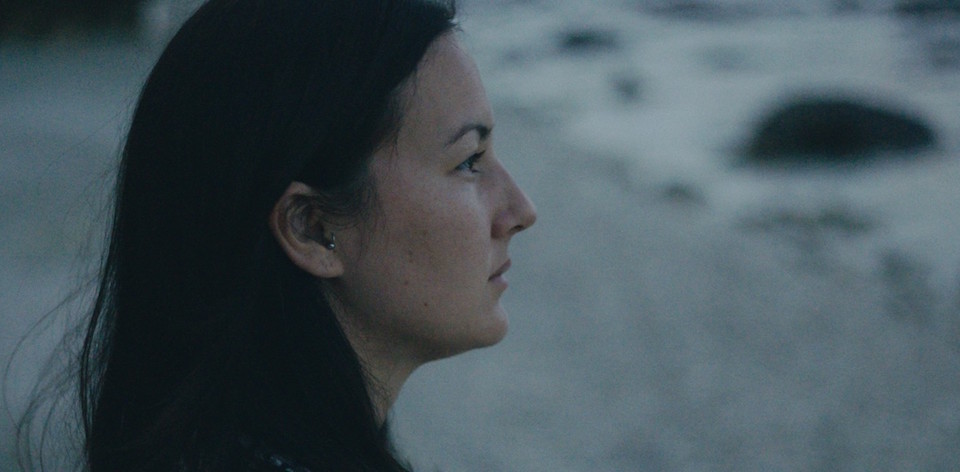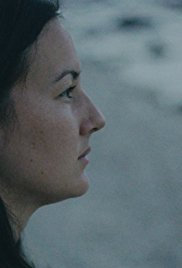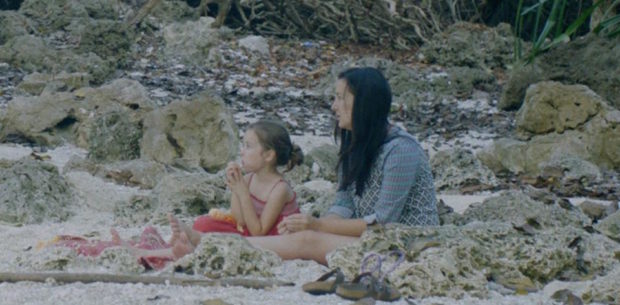Christmas Island, a remote Australian Territory that sits in the Indian Ocean, is an incredibly beautiful, peaceful place, known for its nature and the millions of crabs unique to the area who migrate across the island to the sea. We see this in all of it’s awe in the new documentary ISLAND OF HUNGRY GHOSTS, which had its world premiere at the Tribeca Film Film Festival.
The movie reveals that the island has become a place of suffering. People are physically captive to uncertainty, at a immigration detention centre in the island’s jungles. Asylum seekers hoping to become Australian citizens are detained sometimes for years. They are also captive spiritually, as local islanders perform rituals for the first inhabitants of the island who died without receiving proper burials and are now “trapped between worlds.”
Director Gabrielle Brady’s first work is many things. Perhaps too many. At times a nature documentary about the island and its wildlife, and others a critique of the centre and the way it treats the inmates. The connection between the two isn’t very strong thematically. As interesting as it is to watch these crabs crawling over the island to the point that rakes are placed on the side of the roads to clear a driving path, it distracts from the struggles and injustices asylum seekers face. Yet the film is incredibly intimate and empathetic, a good sign of Brady’s talents to come, especially if she’s able to narrow her focus in the future.
Our point of entry to the story is Poh Lin, a trauma counsellor working with those indefinitely housed in the detention centre after surviving horrific circumstances in their native countries and on the journey to the island itself. Brady follows her at work in one-on-one therapy sessions, and at home with her husband and young daughters. It’s a brilliant move because we get to see the major toll this work has on her. We see her cry in the bathroom after a session. She wants to help these people but she can’t.
At one point she compares the situation these individuals face to a prison sentence, with prison being the favorable. At least there you have a set sentence, here she laments there is no such thing, people have no idea how long they’ll be lodged here. In the meantime their spirits suffer. Poh wrestles with continuing her work there. She doesn’t want to support the system, but genuinely feels for her patients. “I don’t know that I want to see the people that I care about worse than the previous week,” she says.
The moments where we hear directly from the asylum seekers during therapy sessions with Poh are the most powerful of the film, even more so than the long (albeit gorgeously shot) sequences of waves crashing into rocks and blowholes. Though these small, private sessions are more show than tell, they elicit a powerful emotional response. We watch a man break down crying while discussing being separated from his mother, seeing her get sick and being unable to help. Another individual describes sewing his mouth shut as a protest against his treatment. It’s difficult not to be moved or enraged.
The most frustrating part of the film is its lack of context for international audiences. It’s difficult to tell what it was like inside the detention centres. A concrete understanding of these individuals’ daily lives and the treatment (or lack thereof) that they received while awaiting a decision is unclear. We only see one aerial shot of the centre itself, buried deep in the jungle. As has been the case in other coverage, we get very little information.
It would have been interested to hear from others who have participated in this system as well, such as former employees or guards, politicians, activists, those who’ve successfully made it to Australia and become citizens, and those ultimately denied entry. While the film certainly makes its audience understand that the current system is cruel and has a crushing effect on the people there, viewers are left with a tentative grasp on the issue. However, the film makes it clear that these individuals are worthy of respect and care.
“Even though we entered the country illegally we never deserved all the pressures they put on us,” a young woman who came to the island with her child says. Poh stops her there to remind her that it is not in fact illegal to seek asylum and that it’s no excuse for mistreatment. She’s right, and as the film suggests it’s time for reform in Australia to reflect that.








